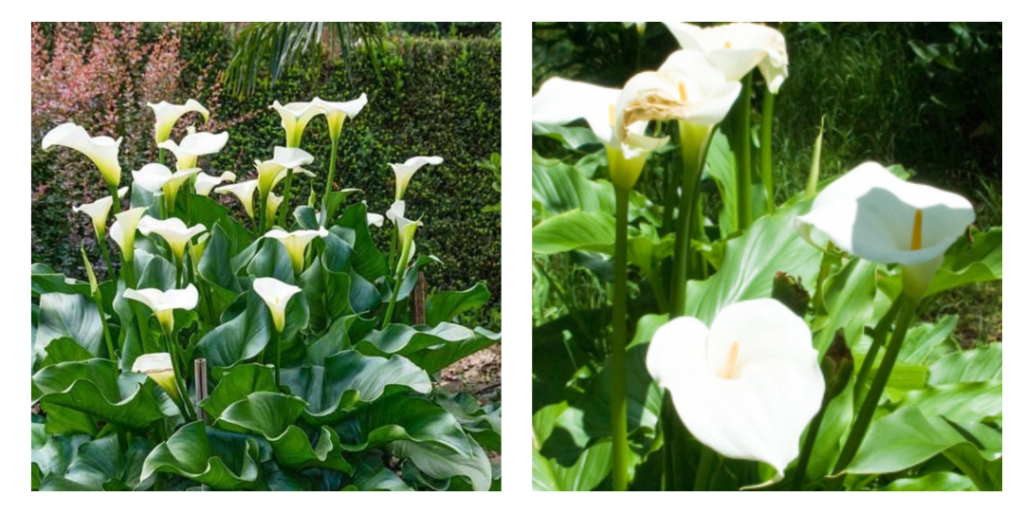
Arum Lily is a declared pest weed in Western Australia which poses a significant threat to our native plant and animal species as it outcompetes native vegetation and disrupts local ecosystems.
Arum lily (Zantedeschia aethiopica) is a robust, dark green, succulent herb, also known as calla lily. It is a robust perennial weed that can grow to 1.5 metres tall. It was introduced to WA from South Africa as a garden plant and subsequently escaped to become established as a weed. This plant prefers sub-tropical to temperate climates and is tolerant to frost. It thrives in areas with a high-water table and can tolerate water logging for short periods of time. It is found in creeks, irrigation ditches and areas of summer-moist land in the higher rainfall South West, often forming large dense clumps. Arum lily spreads by regeneration from tuber fragments and by seed. The white cone-shaped flowers bloom in spring. This plant is toxic to both humans and livestock eaten.
Why it Matters – Arum lilies pose a significant threat to our native plant and animal species, as they outcompete native vegetation and disrupt local ecosystems. The plant’s rapid growth rate and high reproductive capacity, allow it to quickly establish and aggressively out complete native plants reducing biodiversity, creating a dense monoculture, disrupting and decimating natural habitats. This highly invasive, destructive pest plant forms a monoculture, reducing food and habitat for native wildlife and pasture productivity and is toxic to most stock, pets and humans. Effective management strategies include a combination of mechanical, chemical, and biological control methods.
Control Options – Effective management strategies include a combination of mechanical, chemical, and biological control methods, with herbicide application being the most common. Herbicide application via foliar spraying is the most effective method of control, however, this needs to be undertaken with the correct chemical in our area typically from July through to November, however the optimum time to control is from July to September. Chlorsulfuron, a slow-acting and relatively selective herbicide is recommended for arum lily control with optimal application when the plant is flowering (with at least 50-70% of the flowers present) typically between July and late October. Another effective chemical treatment is use of a mixture of metsulfuron and glyphosate, however this should be done before flowering to avoid the potential for seed drop and return of infestations. When spraying with a glyphosate mixture, be sure to only spray intended plants to avoid harm to off-target native plants.
Arum Lily can spread by seed and by roots, so when controlling by physical removal, you must ensure all root fragments are removed from the ground to prevent regrowth. Persistence with follow-up each year to control regrowth is required until eradication is achieved on your property.
Contact LBG to discuss Arum Lily control needs for your property.
Best practice methods for controlling arum lily can vary, so for personalised advice please contact us by e-mail info@lbginc.org.au or ring us on 0477 049 967.
Find out more about Arum Lily as a declared pest in Western Australia at: www.agric.wa.gov.au/declared-plants/arum-lily-declared-pest

Recent Comments